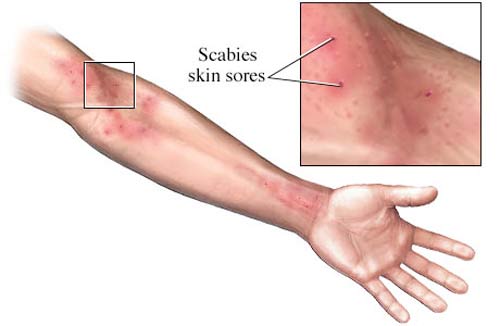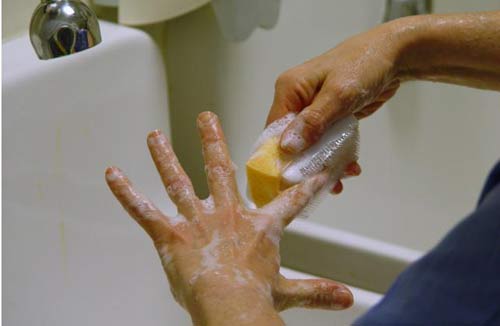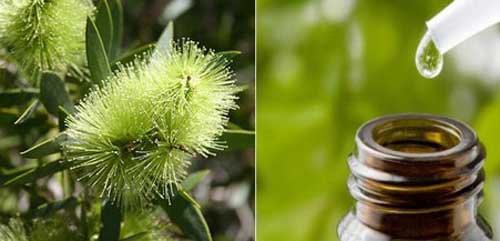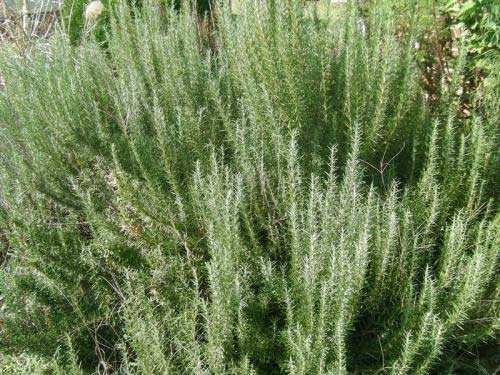
|
|
||
| Our Pages ABOUT CONSTITUTIONAL MEDICINE
|
The intense discomfort and itching of Scabies can probably only be appreciated by someone who has had to deal with it and the social and emotional toll that it can take can be frankly devastating. There is a lot of information on the internet on scabies that is not replicated here, rather the purpose of this article is to describe several natural approaches that have been seen be of much help. However, before getting into any of that you need to first of all be very sure that you are in fact dealing with actual scabies because accurate diagnosis is a subject that is fraught with difficulty. Therefore, it is strongly recommended that, wherever you are, to try to visit with a person with specialised training in this area. They will closely examine your skin under magnification and take some small scrapings for microscopic examination to confirm if you do actually have scabies.
Something that is not so well covered in the literature is the secondary inflammation that is a common after-math of having an initial scabies infection. This comes back to the immune system whereby it has registered a significant invasion and mounts a potent defence via its white blood cells which in turn produce a heightened level of inflammation in the body. The net effect of this for many people can be increased skin sensitivity and itching after the infection has been cleared. Of course, this can very easily be interpreted as a recurrence and this can lead to some people going back into treatment and damaging their skin with unnecessary chemical treatments in the mistaken belief that they are fighting scabies, when in fact they are simply feeling the secondary inflammation working itself out. Even after successfully treating a scabies infection it can easily take a month, sometimes two months for the system to settle down and the skin to go back to feeling normal.
All the advice you will read about scabies re cleaning and re-cleaning your bedding etc. and being ultra-paranoid about cleanliness in general, is painfully true. What is less emphasised is how much of a difference the state of your hands has on the spread of infection. Everyone with scabies is prone to getting at least some of it in their nail beds and around their hands -- so the first step to prevent spreading and re-infection is to get the hands and fingers as clear and clean as possible. The intense itching of scabies is very hard to control in the day and more or less impossible at night, hence it is extremely important to limit the spread of the mites by taking extra special care of your hands. Carefully trim your nails down as short as you safely can without damaging the delicate tissues underneath and then use a soft nail brush to gently clean all around the nails. Note the word gently. Damaging your fingers by brushing too hard will not help matters one bit. Use warm soapy water and/or warm water diluted with some Tea-tree oil as discussed below.
The second step to widely recommend is to use Tea-tree oil -- and possibly a lot of it! Before discussing this further, you need to know that people’s ability to tolerate Tea-Tree oil varies considerably. Be cautious with it until you know how sensitive you are. If you know you are a very sensitive person then only apply some diluted Tea-Tree to one small part of your body first to see how you react to it. It is very rare to see any kind of allergy to Tea-Tree, most reactions happen to it from simply using it too strong and without enough dilution. Sensitivity to Tea-tree does happen and will usually take the form of a red rash in the area coming up in the place where you have put it on about a day or so afterwards. I suggest starting by using it very diluted, e.g. a ratio of half a tsp of Tea-Tree into half a cup of water. Use it is as a wash over your whole body, then use a soft brush to gently work the diluted Tea-Tree into the affected areas and take care not to damage the skin with the brushing by being too vigorous. That said, in each case of scabies that I have worked with, we have used a lot of Tea-Tree and the person affected has been able to apply it very strongly indeed, perhaps even up to about ‘half and half’ water to Tea-Tree (50% dilution) and even sometimes directly, i.e. undiluted, on places such as the hands or feet. Don't rush to use the Tea-Tree anywhere near these strengths however, or you may damage your skin and that will be an unnecessary set-back. You must slowly and carefully build up the level of concentration until you know what your skin can tolerate. It is recommended to wash and/or gently brush your skin with the Tea-tree and water twice a day. This approach has worked very well for a number of people but it has taken time and perseverance, be patient and consistent.
Part of the cultural 'cringe' of getting scabies is that it is associated with a lack of good personal hygiene or cleanliness in the home. Unfortunately, that stereo-type will not be going away anytime soon despite many people with impeccable personal and home cleanliness succumbing to the condition simply because of who they have been in contact with... General immune health, on the other hand, most definitely can influence how long it takes scabies to resolve and how likely it is to re-occur. Immune health is an important subject, read an over-view of what can help build good immunity here
These last two suggestions are not from my own clinical experience but colleagues overseas have talked about the effectiveness of Neem oil in treating Scabies infections. I understand that Neem is a particularly pungent smelling herb and, thus far, I have found that the Tea-tree oil used in sufficient amounts has always been up to the job but no one thing works for everyone and the Neem oil may be well worth looking into further. Another approach I want to mention is from clinical herbalist Heather Nic an Fhleisdeir, included here with her permission, who writes: "Living here in a place where folks come back with scabies from travels, I've gotten excellent results with 1/2 ounce rosemary essential oil in 1 pint castor oil. These two need to be mixed well. Apply topically twice per day as needed to smother, kill and extract the buggers as well as bring down the inflammation and bring up vitality. It can be sticky, but most find it soothing."
Please understand that I cannot personally advise you without seeing you in my clinic. |
|
|
|
© 2011 R.J.Whelan Ltd






